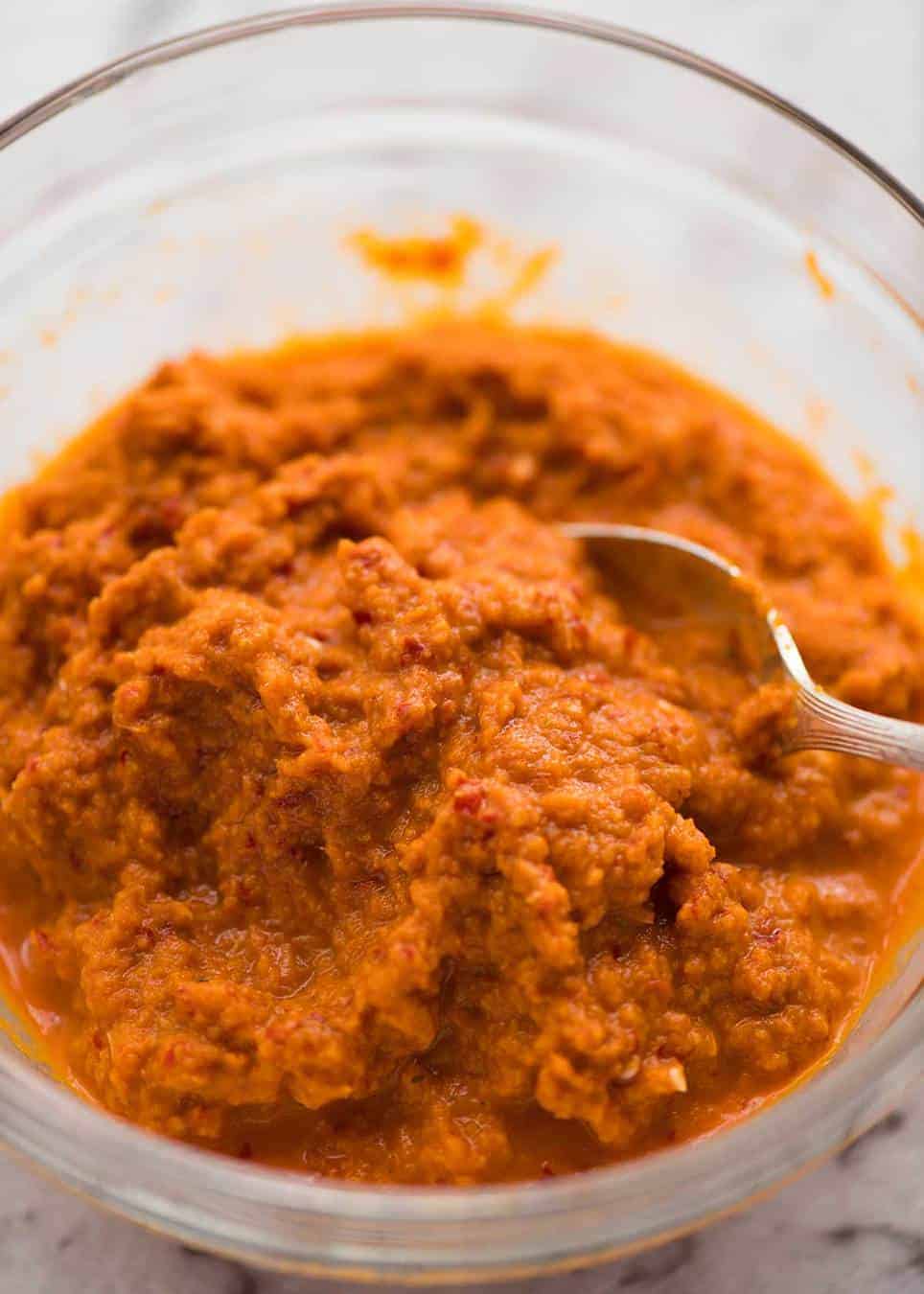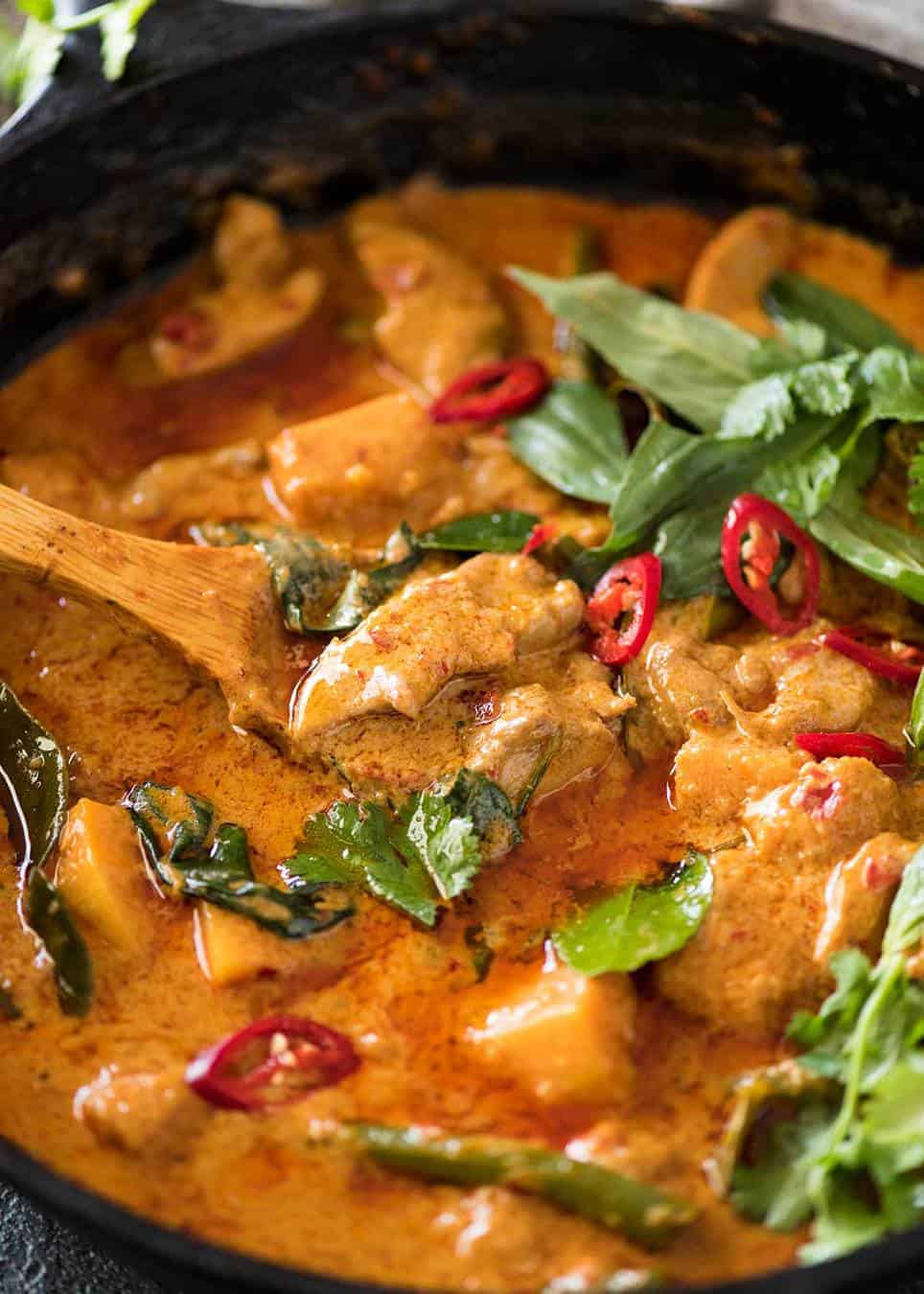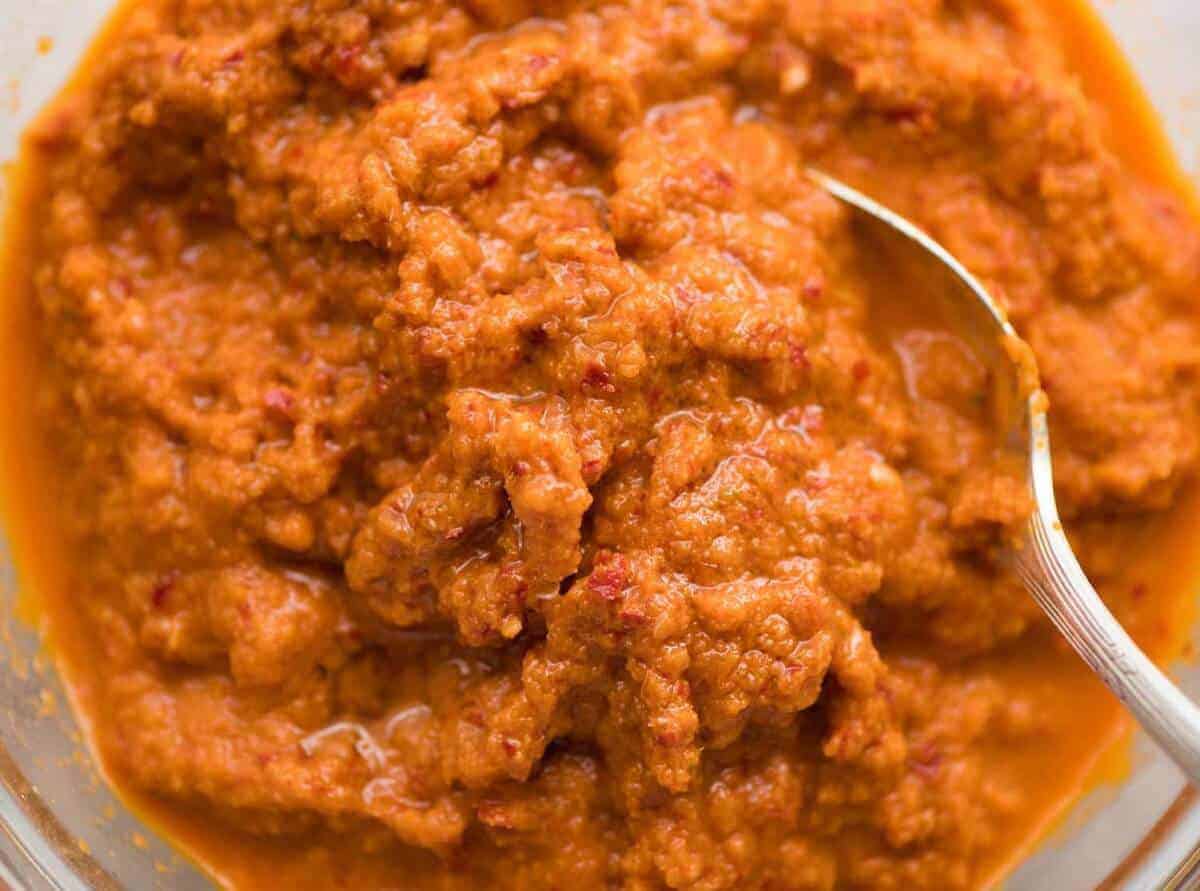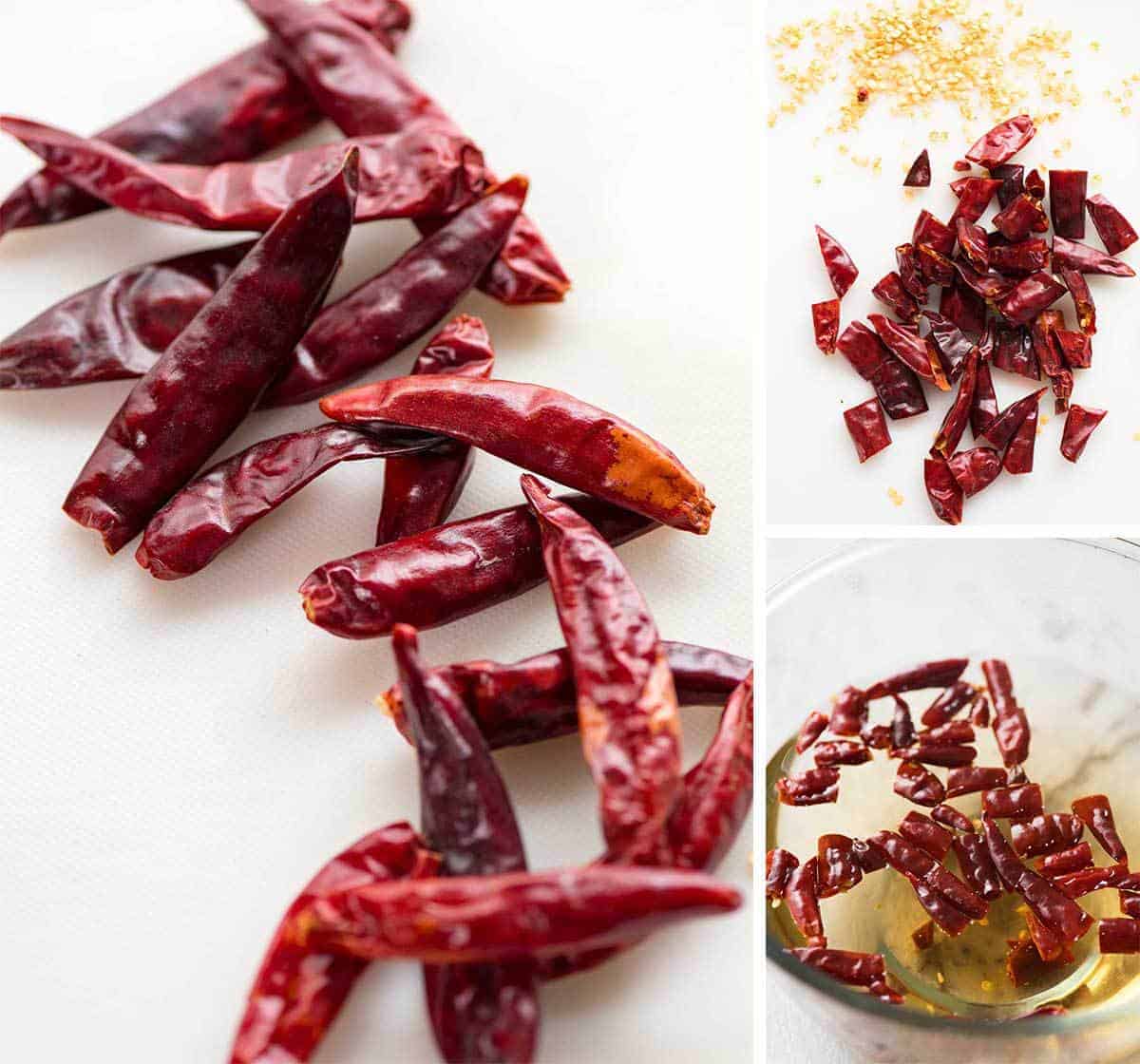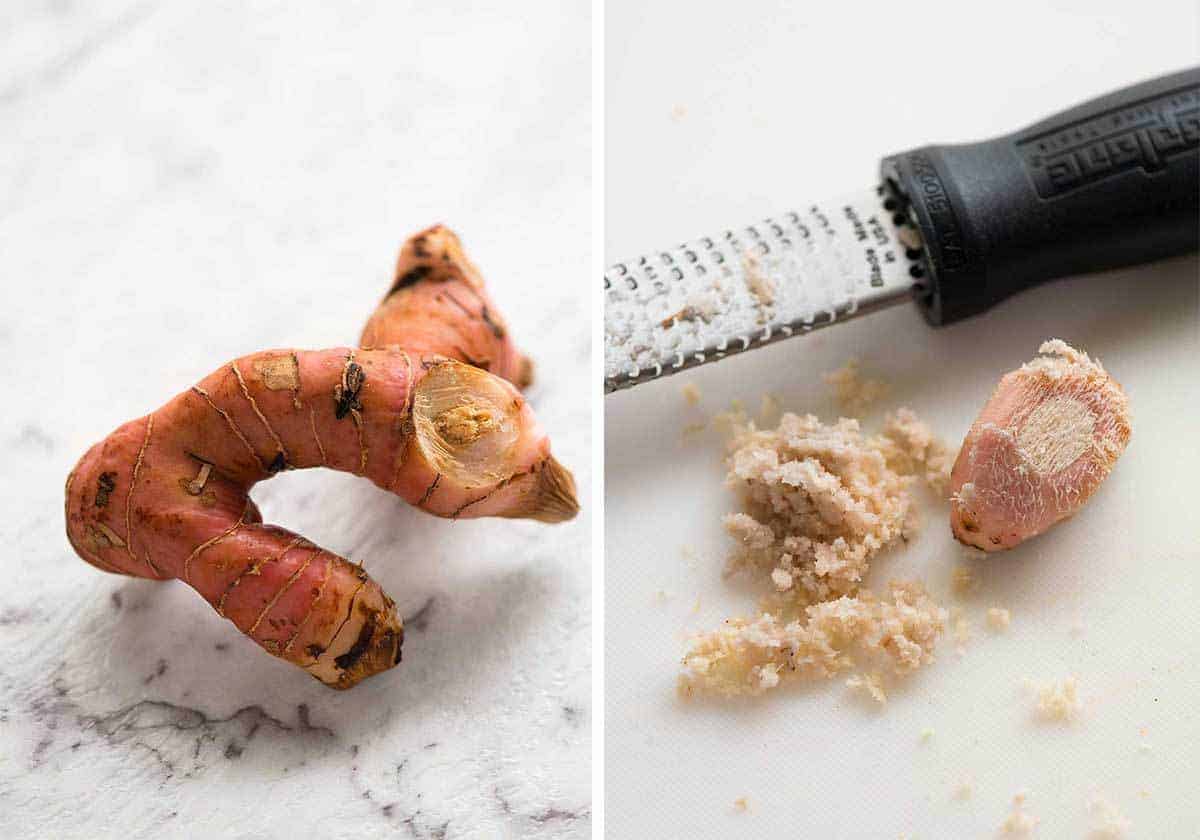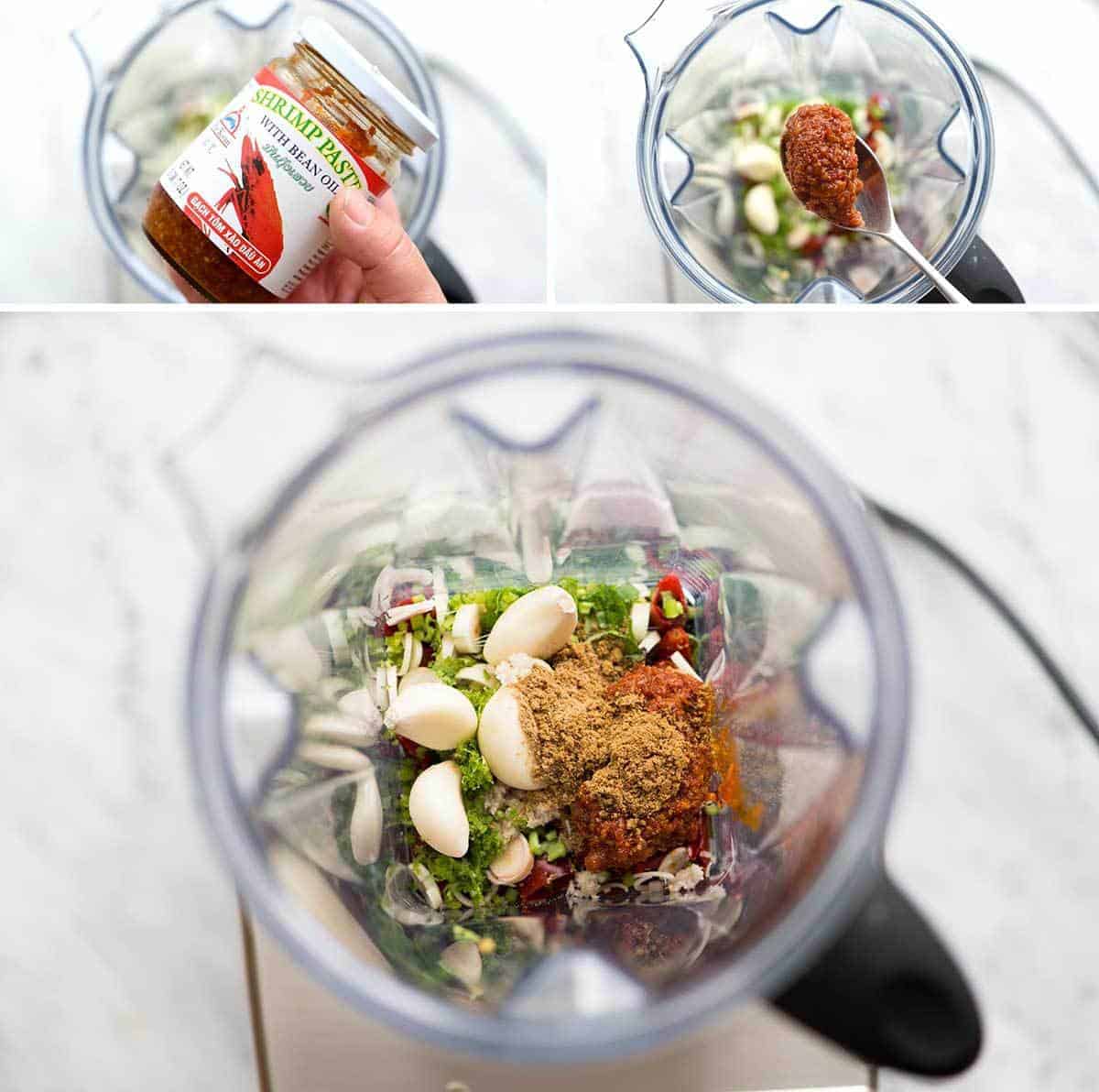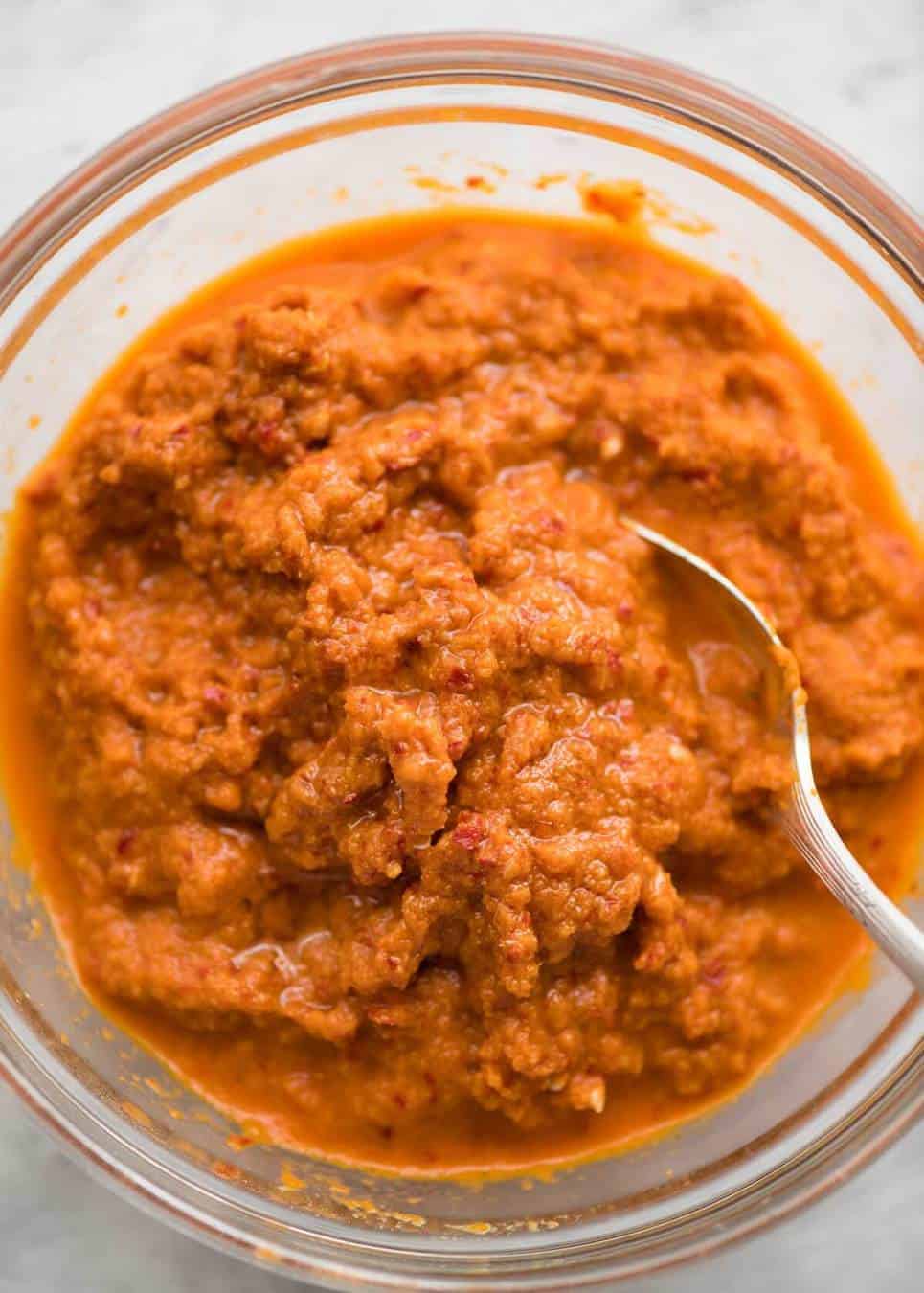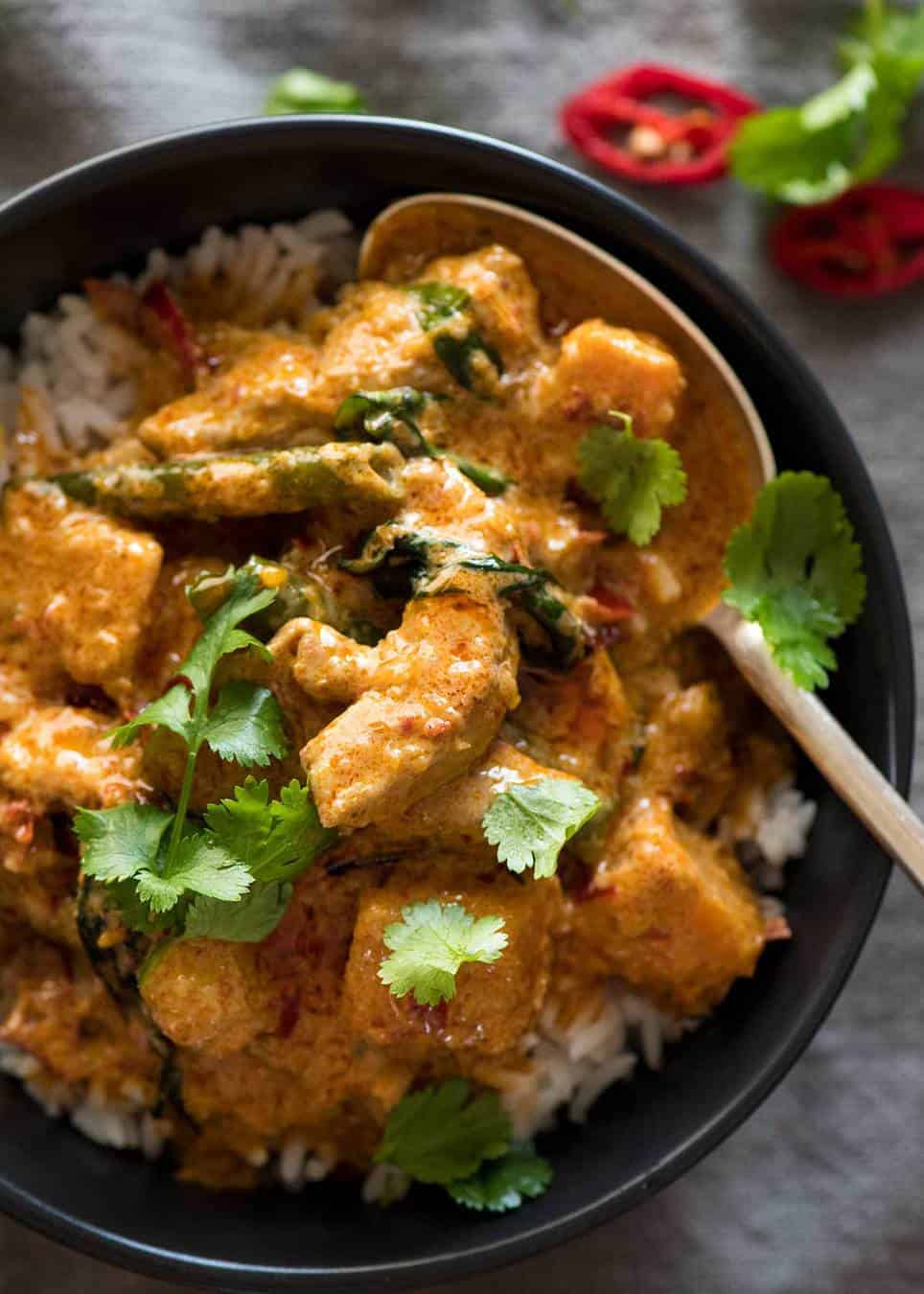Like Green Curry Paste, a homemade curry paste yields the freshest, most fragrant curry that you can never buy in a jar. Use this red curry paste recipe for Thai Red Curry, fish cakes or add zing to Thai Fried Rice!
Thai red curry paste
This Thai Red Curry Paste recipe is a RecipeTin Family effort, refined over years with multiple family meals during which we critiqued the latest version. We’re a tough crowd, when it comes to each other. We don’t hold back punches. You should have heard the critiques for the earlier versions. “It lacks complexity!” -> “Something’s missing… I don’t know what. Something’s missing!“-> “It’s nice, but it’s brown not red.” -> “Why is it gritty?” “The veggies are too soft, the chicken’s not tender enough” -> “It’s almost there! Almost!” ? Actually, the cook is usually the toughest critic. We’re pretty hard on ourselves! But finally, the whole RecipeTin Family approves and we declare this curry paste to be The One. A Thai Red Curry Paste that’s totally doable by any home cook that makes a Thai Red Curry that rivals those served by the best Thai restaurants in Sydney – and we are known for great Thai food here!
How Authentic Thai Red Curry Paste is made
Truly authentic Thai curry pastes require serious effort – the paste is made by grinding the ingredients in a mortar and pestle and it takes over 30 minutes. The first time I tried it, I was cursing like a sailor less than 10 minutes in, chilli bits flying everywhere. The 2nd time I tried it, I gave up 3 minutes in and scraped everything into a blender. Blender is the way to go. Blender all the way!!! Much of the base for this Thai Red Curry Paste is drawn from Chef and restaurant recipes. Little tweaks here and there to balance it to my taste to make it as close as I could to the red curries served at my favorite Thai restaurants.
What goes in Thai Red Curry Paste
There’s no denying that you’ll probably require a trip to the Asian grocery store to get all the ingredients for Thai Red Curry Paste, unless your local supermarket has an exceptionally well stocked Asian section! But everything should be relatively simple to hunt down, they are all pretty common Asian ingredients. Just show the shop keeper these photos if you can’t find them! The star ingredient in Thai Red Curry is dried red chillies. Chop before hydrating in boiled water to shake the seeds loose (seeds = spiciness) and also, they hydrate better = easier to whizz into a smooth paste. Using fresh red chillies won’t produce the same end result, I tried. Dried chillies have an earthy flavour, they are not crazy spicy and it’s a key flavour base for red curry.
Another ingredient in Thai Red Curry Paste that is a bit unique is galangal. It looks like ginger, but tastes more citrusy and is harder to cut. If you can’t find it, substitute with ginger and lime zest. Because galangal is so tough, it can be one of the offenders of grainy curry sauce because consumer grade blenders and food processors can’t blitz it finely enough if you just throw chunks in. In our Red Curry Paste readings, we never came across a recipe that called for galangal to be grated. But this step is truly worth taking if you want to ensure your curry is smooth, especially if you have an ordinary blender. I have a powerful Vitamix blender, and I still grate my galangal.
The other key ingredient in Thai Red Curry Paste is Shrimp Paste. This is where our recipe differs from some authentic Thai recipes. Made from fermented, dried shrimp (prawns), most Thai recipes use pure shrimp paste which is called Belacan. Typically, it’s sold in dried blocks which is required to be soaked to rehydrate before use. However, we like to use Shrimp Paste that comes in a jar with oil and some other flavourings added. This is a tip I picked up from Sujet Saenkham, the chef of the very popular Spice I Am Thai restaurants in Sydney, and it was our final tweak that took our curry from “it’s almost there!” to “YES!!!! This is truly restaurant quality!!!!”. ( <- OK, there may have been a little jiggy upon the first taste test). The main reason I use this is for the oil because this is the key thing we noticed between hand grinding and using a blender – the extraction of natural oils from the chilli. You can’t achieve this using a blender, only grinding by hand. Solution: Use Shrimp Paste in oil. There are many brands out there. I use Por Kwan which is the most popular brand at Asian supermarkets here in Australia. Just check the jar and as long as it has more than just shrimp and salt in the ingredients, it should be just fine.
The other ingredients in Thai Red Curry Paste are more familiar every day ingredients: lemongrass, coriander / cilantro, eschalots / shallots (baby red onions) and lime. Plonk it all into the blender, and blitz away until smooth – this can take a good 30 seconds or even up to 1 minute, depending on how powerful your blender is. And this is what it looks like when it comes out – kind of more orangey than a deep red (PS Curry paste in jars usually has colouring). You’ll be strangely disappointed when you do a taste test – it doesn’t taste like anything amazing. Have faith, my friends, have faith!
Thai Red Curry Paste is a base for many Thai dishes, from Thai Fish Cakes to stir fries, fried rice to noodles. But the most well known use is probably Thai Red Curry. If you’ve ever made red curry using store bought taste, you will be blown away how much better made from scratch is. If you’re Thai Food connoisseur, you’ll be astonished how close this is to the red curries served at great Thai restaurants. The likes of Longrain, Spice I Am, Chat Thai, Sailors Thai and Khao Pla – the red curries at these restaurants were our benchmark. We hope you enjoy this as much as we do! – Nagi x
WATCH HOW TO MAKE IT
LIFE OF DOZER
This is his scary face. Can’t take him seriously!
